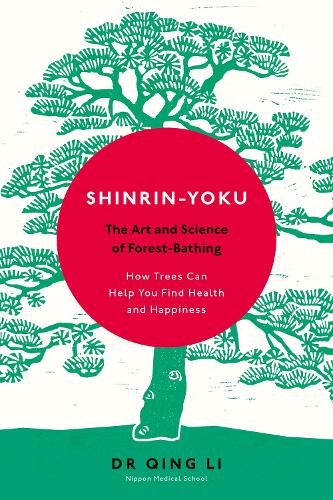From Living Woods Issue 48
A simple walk in the woods can yield untold benefits.
Matt Larsen-Daw dips his toe into the Japanese art (and studies
the science behind) shinrin-yoku, or forest bathing.
 SHINRIN-YOKU
SHINRIN-YOKU
THE ART AND SCIENCE OF FOREST
BATHING
Dr Qing Li
Penguin Life, 2018
Dr Qing Li states in his introduction
to this heartfelt pitch for the personal
and social benefits of forest bathing
that he is ‘a scientist, not a poet’, but it
soon becomes apparent that his passion
for trees and woods is as emotional
as it is academic. He reflects on the
many attempts to convey the sensory
experience of forest in art and literature,
before illustrating how science can reveal
exactly why it is so important to humans.
He also unpicks how this knowledge
is needed in today’s society, and how
it is being used in Japan and around
the world to address real problems in
modern society. The term shinrin-yoku
(forest bathing) was coined in the 1980s,
but after a huge injection of funding from
the Japanese government into research
to strengthen the evidence for the
benefits and their causes, it has become
a useful term to describe a methodology
backed up by more than just a gut feeling
that time spent deep in woodland (the
essential principle of any forest bathing
treatment) is helping us feel better in
mind and body. Dr Li is uniquely qualified
to give insight into the findings of this
research, having led much of it himself.
There is a deceptively dense core of
statistical data and scientific evidence at
the heart of Dr Li’s work, but his gentle
conversational style meant that each
time I put down the book after a spell of
reading I was left with the impression of
having taken a meandering walk through
a beautiful wood with an erudite friend –
an impression strengthened by frequent
photos of sun-dappled woodland. Rather
than working his way through each piece
of evidence in turn, Dr Li meanders
through his subject matter in a way that
feels whimsical, introducing a topic and
then taking an extended tangent into
Japanese history, a personal anecdote
or an inter-related point before slowly
working his way back round to the first
point to add a layer of further detail.
I barely realised how much I was
learning, but learn I did. One of the most
fascinating subjects Dr Li explores is the
role of phytoncides – active substances
released by trees in essential oils to kill
or inhibit the growth of bacteria and
fungi. When we walk through a forest
– especially a pine forest – the air we
breathe is filled with these chemicals,
and studies now show that these have a
number of effects on human physiology.
In particular, they prompt our bodies to
create more ‘natural killer’ cells that form
our bodies’ best defence against harmful
viruses and cancerous tumours. They also
play a role in decreasing stress.
One experiment described by Dr Li
involved circulating essential oils from
pine trees in hospitals to monitor
the impact on patients and staff. This
yielded compelling evidence about the
benefits of phytoncides, but could worry
conservationists since it suggests ways
to replicate the benefits of trees in a
way that requires neither healthy woods
nor time spent among trees. Luckily the
wider research makes it clear that
there are simply too many complex
factors at play when one is immersed
in forest for any artificial re-creation to
be as valuable as the real thing. Fractal
shapes, natural sounds, oxygen-rich air,
and even the colour green can all be
shown to bring benefits. It is immersion
in a real forest that our bodies and
minds crave.
I began reading with a nagging
concern that this book would build a
barrier of jargon between me and an
experience I already value. However, I
ended up more inspired than ever to
get back out into the woods as often
as I possibly can. I was also convinced
of the value of quantifiable scientific
evidence for the benefits of time in
woodland, given that this has allowed
the Japanese government to justify the
expense required to design and deliver
a programme addressing tangible social
problems even if the ‘treatment’ itself is
no more complex than spending time
in woods and experiencing the very
same benefits that nature lovers the
world over already enjoy. I only hope
that other governments can be just
as inspired, and that if nothing else it
persuades them of the importance of
accessible woods that allow everyone
in society to experience these life-enhancing
benefits.